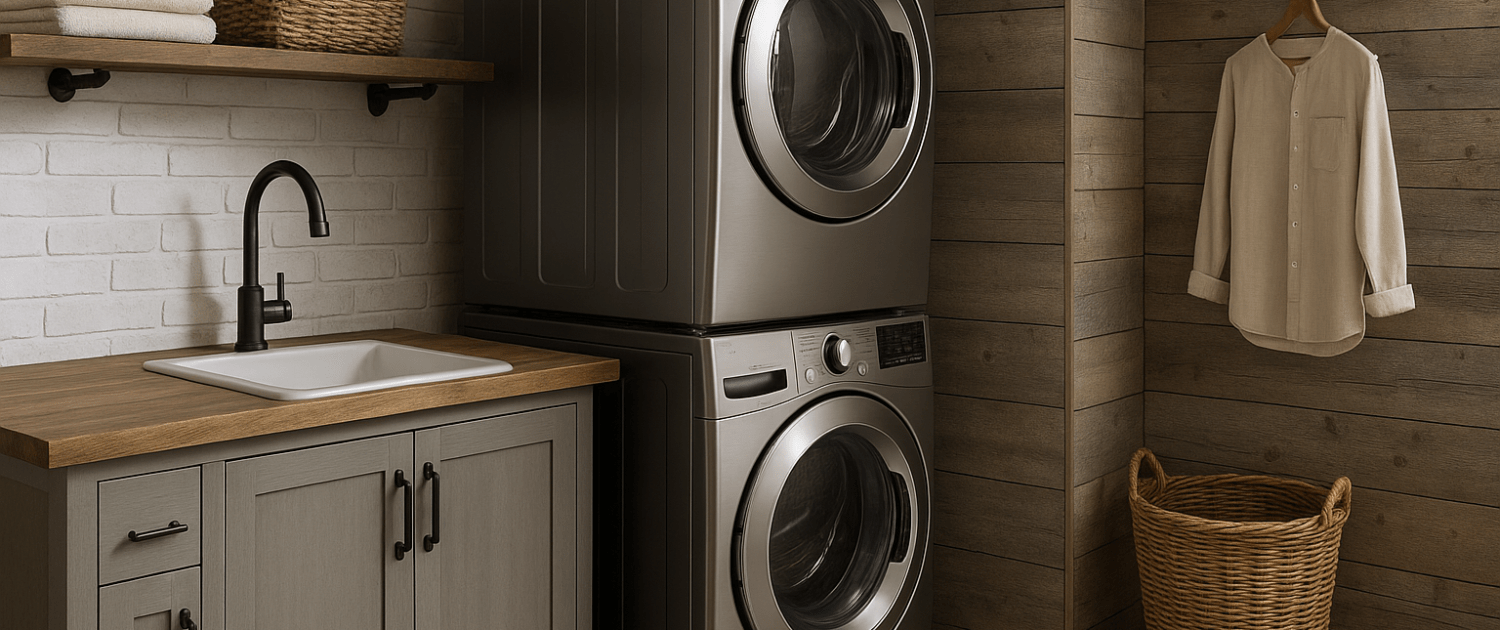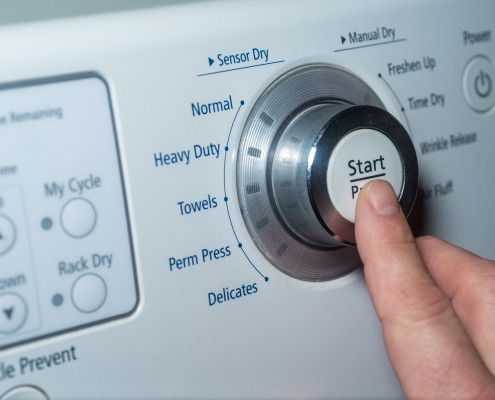Troubleshooting a Samsung Dryer With Low Heat on High Setting
Steven E / Thursday May 29, 2025
A Samsung dryer that won’t heat, even on the highest setting, is usually caused by a failed heating element, a blown thermal fuse, or a faulty thermostat. We’ll show you how to identify the issue and fix it yourself with simple DIY steps.
If you need any replacement parts for your Samsung dryer, you can enter your model number at AppliancePartsPros.com to order them. Most orders arrive in just two business days, and we have thousands of free guides to show you how to install your new parts.
The information in this article may not apply to your specific appliance model. We recommend consulting your manufacturer’s documentation or contact us with any questions.
What you need
- Phillips screwdriver
- Multimeter
Safety precautions
When working on any appliance, always keep safety first to avoid personal injury or damage to the appliance or its parts. Here are some tips to keep in mind:
- Always power off and unplug your appliance or switch off the circuit breaker before you attempt any maintenance or replacement work. This keeps you safe by eliminating any risk of electric shock.
- If the appliance has recently been used, give it plenty of time to cool down before working on it.
- Take your time while working to prevent accidents and personal injuries. Rushing is the enemy of precision.
- Work in a well-lit area so you can see and access appliance parts.
- Keep your workspace free of clutter and other obstacles. Keep children and pets away from the work area.
- Never work on internal parts with wet hands. Make sure the work area is completely dry.
- Check the user manual to see if there are specific installation or safety instructions related to your appliance or replacement part.
- Be gentle when handling or removing parts. Excessive force might damage the appliance or cause personal injury.
- Wear insulated work gloves to protect your hands from sharp metal parts and debris.
- When working with wires, avoid touching any exposed wires or terminals. If you need to touch a wire, use a non-conductive tool or wear insulating gloves to prevent electrical shock.
- Always take photos or make a note of wiring terminals or other connections before disconnecting them to make reassembly easier.
- Don’t test live voltage with a multimeter if you’re unfamiliar with how to prevent short-circuiting.
- Consider wearing safety glasses and/or a dust mask when working with chemicals, dust, or a large amount of debris to prevent irritation or injury.
- Turn off the water supply at the outlet before beginning repairs. Keep towels ready to catch any residual water in the system when removing parts.
How to troubleshoot a non-heating Samsung dryer
Below are the steps to diagnose and fix a Samsung dryer that is not producing heat, even on the highest setting.
Step 1. Test the thermistor
- Disconnect power to the dryer by unplugging the power cord or turning off the circuit breaker.
- Use a Phillips screwdriver to remove the two screws securing the top panel at the back.
- Slide the top panel back, lift it up, and set it aside.
- Remove the three screws holding the main control housing to the frame.
- Rotate the main control housing to access the wire connections.
- Locate the CN4 connection and disconnect the wires.
- Set a multimeter to resistance mode (represented by an upside-down horseshoe symbol).
- Test the resistance from the blue wire to the red wire. The expected resistance should be around 10K Ohms at 77 degrees Fahrenheit.
- If the reading is outside of 10 percent of this value, replace the thermistor.
- If the resistance is within range, proceed to test the heating element.
NOTE: Generally, for every 1 degree in temperature difference, 2 Ohms could be added or subtracted. If the temperature in your home is cooler, resistance would be subtracted.
Step 2. Test the heating element
- Disconnect the wires behind the console on the right side.
- Lift up the console and pull it away from the dryer.
- Feed the wires through the top bracket and set the console aside.
- Use a Phillips screwdriver to remove the two screws behind the door near the lint trap.
- Remove the four screws at the top of the front panel.
- Slightly lift the front panel, rotate it forward, and disconnect the door switch harness.
- Remove the front panel and set it aside.
- Remove the lint filter and set it aside.
- Unlatch the wire retainers from the wire harness and disconnect the wires from the drum lamp.
- Use a Phillips screwdriver to remove the five screws from the top plate and set it aside.
- Remove the four screws securing the front bulkhead and disconnect the sensor bar wire connector.
- Take out the screws from the lint duct, pull it down, and set it aside.
- Reach back and remove the belt from the idler pulley.
- Lift the front bulkhead up, pull it forward, then lift the drum off the rollers and set them aside.
- Remove the drum and belt and set them aside.
- Set a multimeter to resistance mode.
- Test the heating element’s resistance by measuring across the element terminals with the wires disconnected.
- The expected resistance should be around 10 Ohms.
- If the reading shows “open,” “OL,” or a significantly different resistance, replace the heating element.
- If the resistance is within range, continue testing the main control board.
If all previous tests indicate normal resistance, the main control board is likely faulty. Replace the main PCB to restore dryer operation.
Let us help
We appreciate you stopping by! Hopefully this guide helped you get your Samsung dryer back in shape. For help with other repairs, you can check out our large collection of troubleshooting guides and videos. Need parts? Just grab that model number and get on over to AppliancePartsPros.com, where you can chat with a tech, read our blog, and more. Make sure to subscribe to our YouTube channel and follow us on Facebook, X and Instagram to see our latest tutorials!
With nearly a decade of experience in providing top-notch customer service regarding appliance parts and repair, Steven enjoys sharing practical advice, troubleshooting tips, and interesting information to help readers stay informed.





 Image by pvproductions on Freepik
Image by pvproductions on Freepik